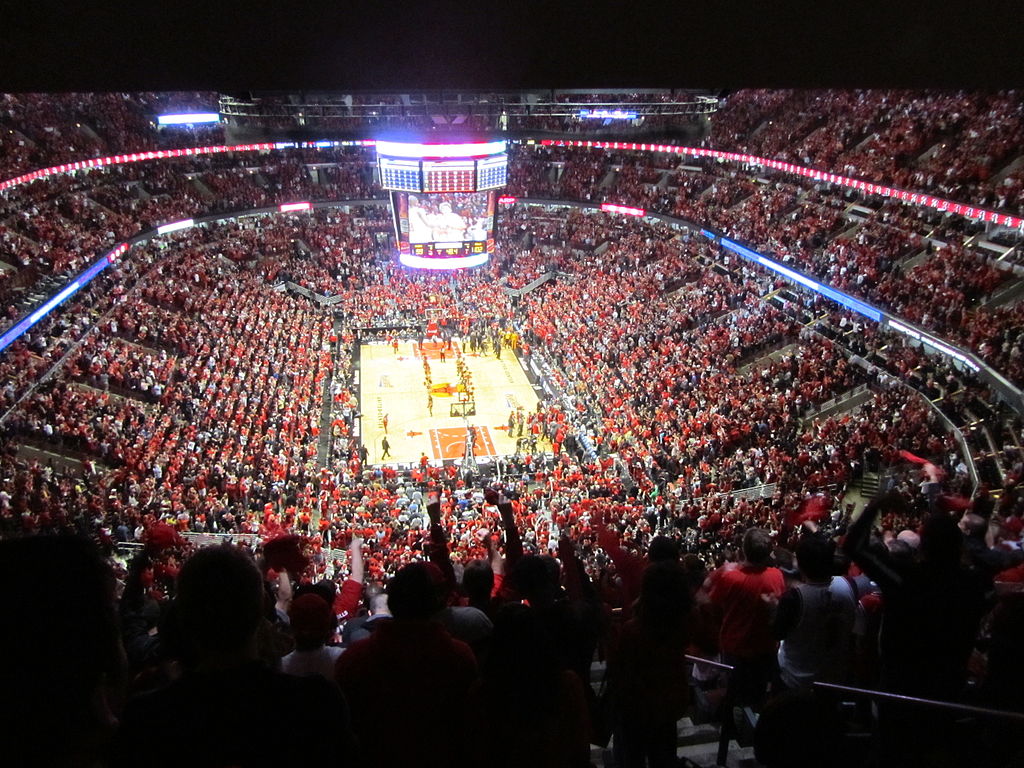

The NBA Replay Center opened at the start of the 2014-15 season to speed up the video referral process for players, referees, spectators and television viewers.
Twelve camera feeds from every match are transmitted to a facility in New Jersey, where officials ‘queue’ up the best angles for the referee to view on a courtside monitor, speeding up a “mindnumbing” process for fans in the arena by half the time.
These feeds are sent over a 10Gbps network that operates independently of the broadcaster but has had several benefits. The first is that the NBA has its own camera feeds to send to mobile and social channels, and the other is that it allows for continuous video to be sent from arenas so couch potatoes can see everything a match-going fan can.
“[They can see] all the crazy stuff that goes in at an NBA venues,” said Hellmuth. “Our teams do a great job at pre-game entertainment. These feeds are sent out linear as well as NBA Game Pass –the NBA’s mobile app]. If our international partners don’t have commercials, they can stay in venue.”
The next stage of this will see video clips ‘tagged’ rather than logged. This means highlights can be distributed within 30 seconds of taking place. And soon, they could be published automatically used cloud based automation tools that will select clips depending on a set number of rules.
But again, the NBA is adamant that the best way to enjoy the sport is in-venue.
“[It’s been] a journey of 26 years to make sure our arenas are prefect theatres for basketball,” said Hellmuth. “The lighting and cameras have to be correct and recently [we’ve been working on the] audio. I’m talking about the fans. [We’ve] designed buildings so fans can project onto the field of play as, after all, that’s why fans come to the game.”
The next stage in bridging that gap is virtual reality and 4K. Hellmuth is excited but believes mainstream adoption will depend on better mobile headsets as well as advances in the technology that let fans sit anywhere in the arena.
“I think people want to know what it’s like to sit at courtside. I think the answer for VR is five or six years out: ‘biometric VR’,” he declared. “You ring the arena with 8K or 12K video cameras so you can sit where you want to in the arena. You can sit next to your friend. I think that’s what the future is. The problem with VR at the minute is you are stuck in a pod.
“We need to watch sports with other people. The next generation of VR needs to accommodate that.”
Are you a tech Olympian? Find out with our sporting IT quiz!
Page: 1 2
NHS software services provider Advanced Computer Software Group fined £3m over ransomware breach that compromised…
China's BYD beats out Tesla in worldwide revenues with $107bn in sales for 2024, as…
Ubisoft and Tencent to create new joint-venture developing some of company's highest-profile games, including Assassin's…
American space agency prepares for testing of Boeing's Starliner, to ensure it has two space…
As UK and Europe develop closer military ties, European Commission says it will invest €1.3…
Zuckerberg seeks to revive Facebook's original spirit, as Meta launches Facebook Friends tab, so users…
View Comments
This is good news regarding the future of Sports Analytics.
I have also set up a sport prediction model for upcoming games on several sports (NBA, NHL, NFL, MLB, Tennis, Soccer) which I named "Bet on Sibyl"
You can check it up on my github profile :
https://github.com/jrbadiabo/Bet-on-Sibyl